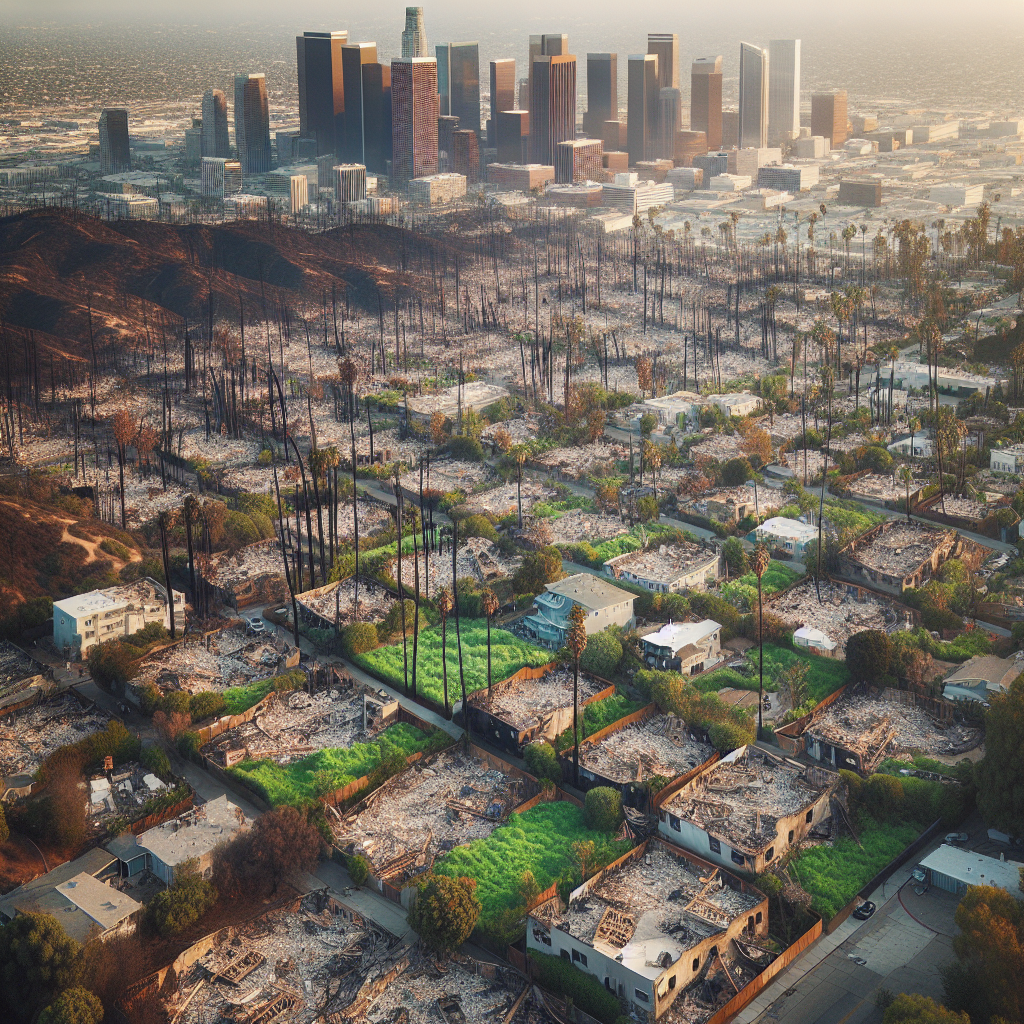The Unrelenting Flames of Los Angeles
Wildfires are no strangers to Los Angeles, but the recent outbreak has left the region reeling. These fires have scorched vast acres of land, destroyed homes, and forever transformed the lives of countless residents. The scorching heat of recent days, coupled with dry winds, created the perfect storm for these devastating fires to rage unchecked.
In the words of one local resident, “It feels like the fire has a heartbeat of its own, constantly devouring everything in its path.” This sentiment echoes across communities that find themselves grappling with both physical and emotional devastation.
Why Are the Los Angeles Fires So Severe?
Every year, wildfires grip areas in California. But why do the fires seem to get worse, year after year? Let’s explore the factors that make these wildfires so intense:
- Drought: California has been battling one of its driest spells in years. Vegetation dries out and turns into the perfect fuel for fires.
- Climate Change: Rising temperatures have lengthened fire seasons and intensified wildfire behavior.
- Winds: The Santa Ana winds, infamous in the region, act like bellows, fanning flames and pushing them into communities at terrifying speeds.
- Urban Encroachment: More homes and developments are being built in wildfire-prone areas, increasing the risk of human lives being affected by these natural disasters.
The combination of these factors has turned parts of Los Angeles into fiery battlegrounds.
The Cost in Numbers
While it’s hard to measure the emotional toll, the fires have already caused immense monetary damage. Here’s a look at the numbers that reflect the devastating impact:
- Acres Burned: Over 55,000 acres have been consumed by the fires, and the count continues to rise.
- Homes Destroyed: Hundreds of homes have been reduced to ash—dreams shattered overnight.
- Evacuations: More than 10,000 people have been forced to leave their homes, many unsure if there will be anything left to return to.
- Lives Lost: At least 5 fatalities have been reported, with dozens injured in the chaos.
These numbers only scratch the surface of the destruction caused by these relentless wildfires.
Human Stories: How the Fires Changed Lives
Amid the destruction, stories of both heartbreak and heroism are emerging.
One such story is that of the Peterson family. They watched helplessly as flames overtook their home. “Everything we built, all our memories, are gone,” shared Mrs. Peterson tearfully. But what amazed her was the kindness that followed. Neighbors they had barely spoken to before opened their homes and supplied food and clothing. “This disaster has brought us closer as a community,” she said.
In another story, firefighters went above and beyond to rescue a senior citizen who had been trapped in her home. “They didn’t give up on me,” the elderly woman said. Such acts of courage remind us of the selflessness that shines through even in times of great darkness.
What Is Being Done to Fight the Fires?
It takes an army to fight these raging wildfires. Here’s what’s being done:
- Firefighters: Thousands of brave firefighters are on the frontlines, battling the flames 24/7.
- Helicopters and Aircraft: Water drops from helicopters and planes are being used to slow down the fast-moving flames.
- Evacuation Centers: Schools and community buildings are being converted into shelters for displaced families.
- Local Volunteers: Everyday citizens are stepping up, distributing supplies and helping their neighbors in need.
Despite their tireless efforts, the battle is far from over. However, these actions show the resilience and determination of both emergency responders and citizens alike.
How Can You Help?
In times like these, we all wonder how we can make a difference. Here are a few ways you can help those affected by the fires:
- Donate to Relief Funds: Organizations like the American Red Cross and local charities are on the ground, helping displaced families.
- Contribute Supplies: Items like non-perishable food, bottled water, blankets, and hygiene products are incredibly valuable in evacuation centers.
- Volunteer: If you live near affected areas, consider volunteering your time to assist evacuees or support fire crews.
- Spread Awareness: Share verified information and updates on social media to keep the public informed about ways they can help.
Every small action can make a big difference.
Preparing for the Future
As catastrophic as these fires are, experts stress the importance of taking preventive measures to reduce future risks. Some key strategies include:
- Defensive Landscaping: Clearing brush and creating firebreaks around communities and homes can slow down fires.
- Stronger Building Codes: Homes in fire-prone areas can be built with materials that are less likely to burn.
- Improved Emergency Alerts: Upgrading communication systems can give residents a quicker heads-up to evacuate safely.
- Investing in Climate Action: Addressing the root cause—climate change—needs to be a global priority to reduce the severity of future events.
These steps will require the collective efforts of government, communities, and individuals.
Final Thoughts: Rising from the Ashes
The Los Angeles fires have left scars, both visible and invisible. Communities have been uprooted, and families have lost everything they held dear. However, amidst the chaos, acts of kindness and resilience remind us of the strength of the human spirit.
As Los Angeles begins to recover, the world watches, hoping that proactive measures are taken to prevent such devastating fires in the future. Recovery will take time, but this city has a history of rising from the ashes stronger than before.
No matter where you are, you can play a role in supporting those affected by these tragic events. Whether it’s through donations, volunteering, or spreading awareness, every little bit counts. Together, we can help rebuild and ensure a safer tomorrow.
“`


